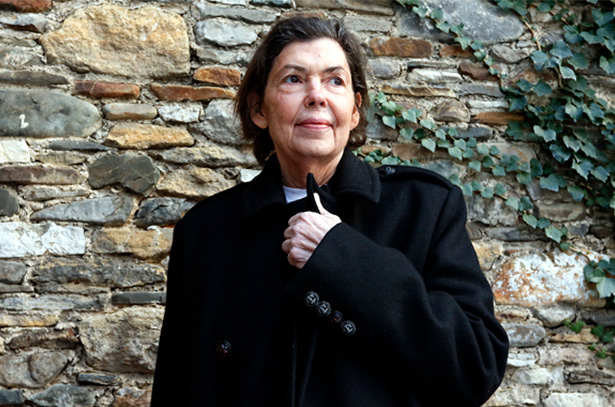
Isa Genzken
Wasserspeier and Angels
9 May – 27 July 2024
London
On view is a revival of Isa Genzken’s expansive installation ‘Wasserspeier and Angels’ (2004), marking 20 years since it was displayed in Genzken’s first major solo exhibition in London, UK. Originally responding to Hauser & Wirth’s former historic space in Piccadilly, London, UK in 2004, the representation of Genzken’s complex assemblage in the city brings her work into a contemporary context, confronting sociopolitical themes that are still relevant today. This moment follows on from the acclaimed exhibition ‘Isa Genzken: 75/75’ at Neue Nationalgalerie in Berlin, Germany in 2023, celebrating the artist’s 75th birthday with a display of 75 sculptures from her oeuvre from the 1970s to the present.
Genzken explores the relationships between different media and social, political and urban spaces, with references to everyday lived experience intruding on her formal experiments. The first presentation of this work not only marked Genzken’s inaugural show with the gallery but also captured a specific moment in time. Working in Berlin, Germany and in New York NY at the turn of the century, the artist witnessed the aftermath of the fall of the Berlin Wall and the subsequent changing landscape of the city, as well as the collapse of the World Trade Center in New York City NY. In parallel, from the late 1990s on, the artist’s sculptural works moved towards assembled installations that borrowed their aesthetic from collages, combining objects with variations in scale. The work on view exemplifies this new artistic language, characterized by its engagement with architectural form and its social dimension. Through the combination of materials sourced for purpose, this multifaceted installation contains layered references and takes on new meaning in today’s landscape.
The installation’s starting point came from the artist’s fascination with the ‘Wasserspeier’ (gargoyles) on Cologne Cathedral, Germany, encountering their restoration in the building’s masonry shop. Having tried to convince the cathedral’s master builder to let her take the carvings to London, UK, the artist instead created her own gargoyles for the exhibition in 2004, setting them in dialogue with winged, angelic figures. The duality between the earthbound and the heavenly has permeated Genzken’s career, reflected in her formal vocabulary through materials associated with engineering and heaviness, such as electric cables, aluminum panels and trollies, in addition to objects evoking the sky, light and wind, from blue sheets to bright lamps and umbrellas.
‘In an effort not to represent the world but to be part of it—in other words, to be modern—Genzken chose as her raw materials the cheap, shiny, and ubiquitous building blocks of the contemporary urban environment […]. Working with these real-world materials, she created installations that engaged with the everyday in substance as well as in subject’.—Laura Hoptman, co-curator of ‘Isa Genzken: Retrospective,’ 2013 – 2014, MoMA, New York NY
Installation Views
1 / 7
Related Content
About the Artist

Isa Genzken
Isa Genzken has long been considered one of Germany’s most important and influential contemporary artists. Born in Bad Oldesloe, Germany, Genzken studied at the renowned Kunstakademie Düsseldorf whose faculty at the time included Joseph Beuys, Bernd and Hilla Becher, Benjamin H.D. Buchloh and Gerhard Richter. Since the 1970s, Genzken’s diverse practice has encompassed sculpture, photography, found-object installation, film, drawing and painting. Her work borrows from the aesthetics of Minimalism, punk culture and assemblage art to confront the conditions of human experience in contemporary society and the uneasy social climate of capitalism.Genzken is best known for her sculptures, gaining attention for her minimalist oriented Hyperbolos and Ellipsoids in the late 70s, and architecturally-inflected works such as her recent epoxy resin windows and skyscraper Columns from the 90s. Genzken’s practice is incredibly wide-ranging, but her work remains dedicated to challenging the viewer’s self-awareness by means of physically altering their perceptions, bringing bodies together in spaces and integrating elements of a mixed media into sculpture.
Genzken’s totemic columns, pedestal works and collages combine disparate aspects from her many sources in seemingly nonsensical, yet harmonious sculptural compilations. These sculptures take the form of precariously stacked assemblages of potted plant designer furniture, empty shipping crates and photographs, among other things, arranged with the traditions of modernist sculpture in mind. With this cacophonous array of objects, Genzken undermines the classical notions of sculpture, re-creating the architectural dimensions of her beloved skyscrapers and the riotous colors of the city streets. Devoid of the weightiness and overpowering scale seen in the sculptures of her Minimalist predecessors, her work abandons notions of order and power, allowing the viewer to relate to the works’ inherently human qualities of fragility and vulnerability.
Inspired by the stark severity of modernist architecture and the chaotic energy of the city, Genzken’s work is continuously looking around itself, translating into three-dimensional form the way that art, architecture, design and media affects the experience of urban life, and the divides between public and private. There is an intuitive and consistent manner to Genzken’s work, not only in dramatising aspects of space and scale for the audience, but in creating new dialogues and contact with surfaces of material. The socio-political content is evident and central to her oeuvre.
In 2017, Genzken was awarded the prestigious Goslarer Kaiserring (or Emperor’s Ring) by the city of Goslar, Germany.
Current Exhibitions
1 / 10
















